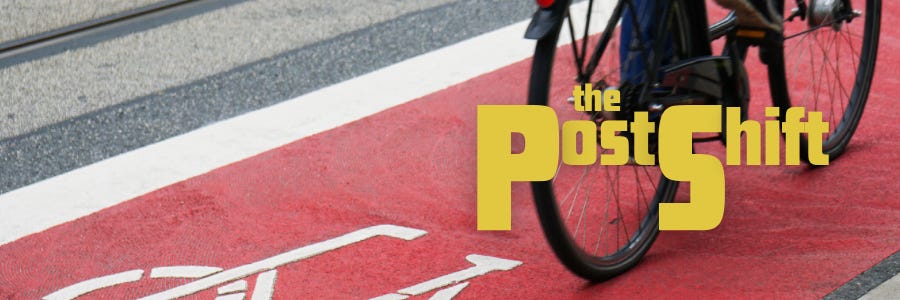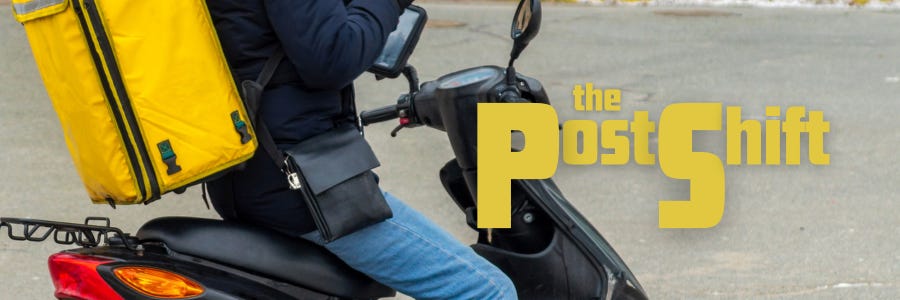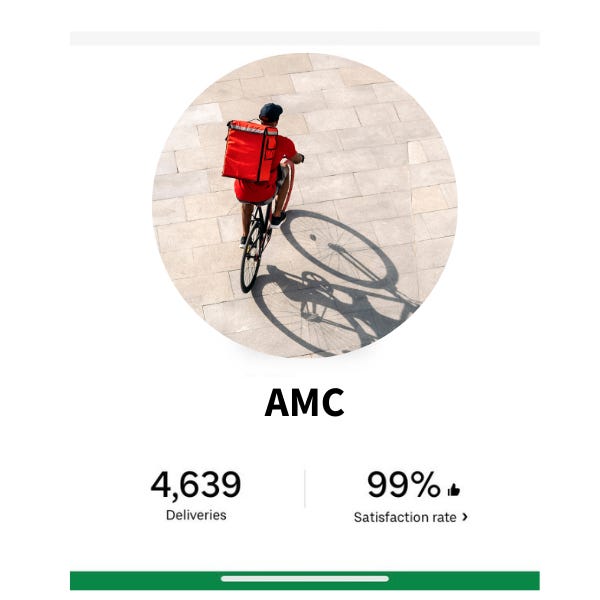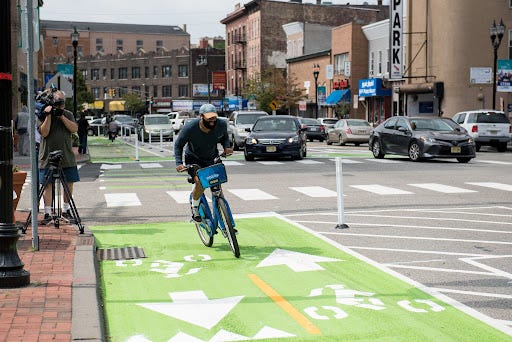Interview with a Full-Time Delivery Driver
“Encourage people to order food guilt-free and at a reasonable price. Encourage safe deliveries on the road.”
Happy Friday! Usually Friday posts are for telling secrets, but I’m just too enamored with the world of delivery driving right now. This is information for the people!
With the fresh legislation on delivery driving in Jersey City and Hoboken, I figured it was far more timely to publish this sooner rather than later, since there are still a lot of unanswered questions and pertinent discussions to add to the conversation.
To brush up on the recent laws, check out the basics here:
Everything you need to know about e-bike deliveries in Jersey City and Hoboken.
📦 Special delivery, all. 📦
Let’s talk delivery
When I started writing these pieces about e-delivery, I had no strong opinion on the matter. As a line cook, I generally lean towards frustration: I’ve had unpleasant experiences with impatient, rude drivers who treat the dining room like a waiting room, and I’ve long been annoyed by complaints about the food quality relating to things outside of the restaurant’s control, like temperature and presentation.
As a consumer, I’ve ordered delivery a handful of times. I’m a broke-ass line cook moonlighting as a freelance writer. I rarely order things unless I’m sick, or completely strapped for time on a deadline — I simply can’t afford it, and frankly, I’m almost always disappointed. The last time I ordered delivery sushi, I was given a pair of used chopsticks (!!!) that had been tucked back into a paper sleeve, and haven’t been able to bring myself to order since. 😵
As an e-bike commuter, I generally try to share the road, although driving in Jersey City is hazardous, to say the least. There are dozens of deliveristas waiting on the street corner when I unlock my bike, and my interactions have not always been pleasant. They whiz the wrong way down one-way streets and bypass pedestrians on sidewalks without a second thought.
I do, however, respect the hustle come rain or shine and can understand how spending days on the road (without a proper break room or bathroom) can feel undignified. The looks from drivers in cars (or their complete blindness, in some cases) can make it feel like an invisible, thankless position — to say nothing of working very hard for essentially only tips.
So, what’s the status of delivery driving, particularly on e-bikes and electric vehicles? Is it worth it?
I got in contact with a local full-time deliverista to find out.
Meet your driver
He goes by AMC, or @amcourier, preferring to keep his identity anonymous. If you’re local here, there’s a good chance he’s delivered something to your door — he’s been driving full-time for four years.
AMC got his start delivery driving on the coattails of the pandemic.
“I went for a walk one day and saw these guys in the freezing cold,” he said. “I thought maybe I could make some extra cash delivering. So I put a regular bike on a credit card and thought if it didn’t work out, I’d return the bike. But it turned out to be lucrative, so I doubled down and got an e-bike.”
He rides for all of the major apps: UberEats, Doordash, Instacart, and Grubhub, to name a few. It’s different now than it used to be, he says.
“I recall times I thought to myself, this area, Hoboken and Jersey City is a well-kept secret,” he shared. “[Now] our market’s oversaturated and it sucks. I have to work harder or longer for the same earnings. Whatever secret I thought was well kept, it’s out. It’s the inevitability of this work.”
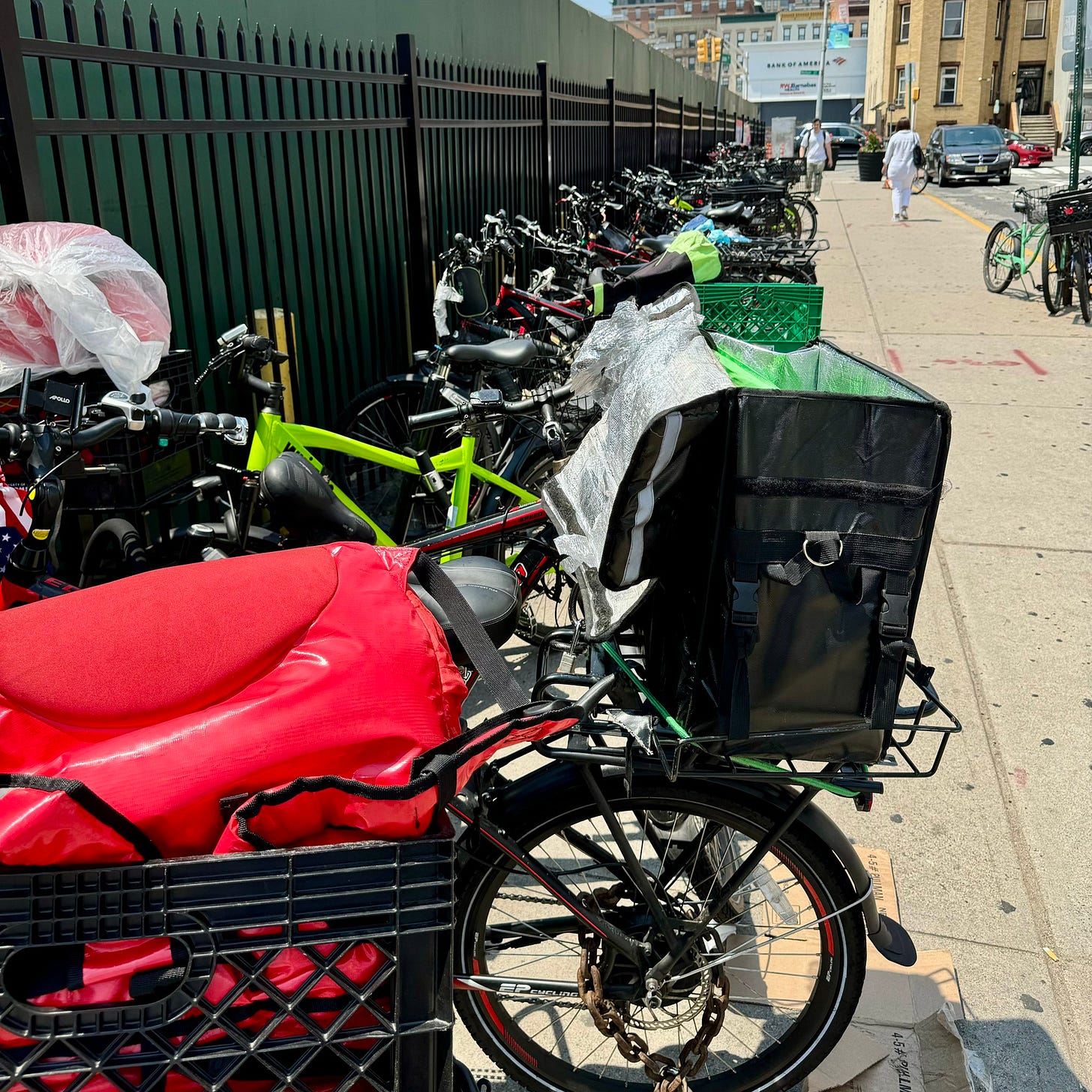
The ongoing ID crisis
Many delivery drivers are operating on rented vehicles with borrowed accounts, one of the major problems with the system. The ease of access when it comes to driving on the apps means there is nearly no barrier to entry for immigrants looking for work.
New migrants filing asylum applications are usually required by law to wait a full 180 days before becoming eligible to work, a barrier easily overcome by gaming the delivery app system.
Those looking to bypass the wait time can easily pay an active account holder a fee to “rent” their account, getting them onto the streets and into the workforce immediately.
It’s estimated the shadow-fleet of delivery drivers exceeds 65,000 workers in New York City.
When I asked AMC about the influx of drivers that are overflowing into Hoboken and Jersey City, he responded, “There’s an end game to the apps. Eventually, everyone will get around how lucrative earning on an e-bike can be. Once everyone starts doing what you’re doing, you know what happens.”
He confirms, “There’s also just about no barrier to an account other than purchasing a vehicle. Sign up is easy. Getting an account on Facebook marketplace is easy if you’re undocumented or a felon.”
The lack of verification and transparency is a major point of frustration for professional delivery drivers, who take these jobs as seriously as any profession.
“If all delivery app companies properly verified their drivers they’d slash their workforce by more than half I estimate,” AMC says. “Is that in best interest of these mega corporations that wanna pay $2 for a 4 mile order? No. They haven’t changed anything on the back end to ensure drivers are who they say they are. It hurts us drivers that are legit, as you can imagine, in various ways. Mostly financially. A selfie on a phone isn’t verification.”
Who’s in charge?
The Venn diagram of who’s involved with delivery apps encompasses, well, nearly everyone. The five major players include the apps themselves, the restaurants, the drivers and deliveristas, the guests, and the local government.
With so many people involved, the water muddies quickly. Who’s in charge of taking care of delivery workers, who operate as independent contractors?
The answer might seem to be local government, or even the apps themselves, but AMC says it’s about everyone using their roles in the right way.
“The government’s job is to illustrate terms,” he says. “As for the apps, what are the terms of our engagement?”
He continues to say the government shouldn’t have the right or ability to cap delivery driver’s wages or rates. “I’d rather be paid in tips than by Doordash any day.”
The city resident list of complaints is long, starting with the dangerous sidewalk usage and lack of safety on the road. It’s the job of the city, he argues, to put its residents first, rather than independent contractors coming from outside to do business. Encouraging deliveristas to loiter outside of restaurants, a practice he calls “hugging,” only exacerbates the resident’s complaints and makes everyone look bad.
“[Hugging] is a behavior I not only do not engage in but detest. I have never and will never subject myself to working this strategy.” Real professional delivery drivers avoid this behavior, he continues, explaining,“The closer proximity to the restaurant, the more chances of getting a decent order from that restaurant.”
These are the types of issues AMC believes will make the transaction better for everyone involved, from the drivers to the hungry guests, and everyone on the road or sidewalk in between them.
How can the city keep its drivers safe?
As Hoboken and Jersey City continue to adapt to a system that isn’t going anywhere, infrastructure is bound to change. I asked AMC on his opinion about the best way to go about this.
“There are red lights on Washington that delay for pedestrians to cross,” he says. “That’s a good time for a cyclist to safely and slowly turn into another street because if you don’t, you get hit with traffic coming from both ends of the street when the light turns green again. The other option, what I do, is dismount, walk across the street like a good American, and go about your business.”
“I posted a video on the Hoboken Reddit that’s the second most upvoted post in the forum’s history. Canada has a task force dedicated to keeping bike lanes safe. That’d be great for Hoboken: a dedicated task force for e-mobility and cyclist safety.”
He continues, “I don’t think accommodating drivers to come in from NY and all over NJ with parking stations would be proactive. But I’m obviously biased, since less drivers one the road means more orders for me. I think Hoboken needs their bike parking as much as they need their sidewalks back. Period. It’s a square mile city.”
On the side of the apps themselves, he agrees there needs to be a system of verification built into the process.
“App companies could also verify delivery drivers at merchant [sites],” he says. “Merchants already rent out tablets from delivery app companies — why not use that to verify the drivers?”
As a community, we lean on the new delivery system of the modern age. Suffering from a crippling hangover? DoorDash a Gatorade to your door. Need a pizza after moving a couch up the stairs? It can be at your flat in seconds.
In big metro areas and cities, delivery driving is interwoven in to the new contemporary fabric of our societies. Although it’s facing growing pains, there’s no reason to not treat this job like a legitimate profession, something worth doing and doing well.
A final tip
AMC leaves me with a pro local secret. Where does he stop to grab a bite on the road?
“Chicken tenders from Johnny Pepperoni!” he shared. “Oooof — a low cost hidden gem.”
That’s it for this week.
I hope to have an interview with City Councilman Paul Presinzano here shortly to add to the local discourse, as well as a very fun chat with local restaurant owners who are not only utilizing delivery driving but depending on it to stay open.
Good luck if you’re working this weekend, see you all Monday!
Cheers,


